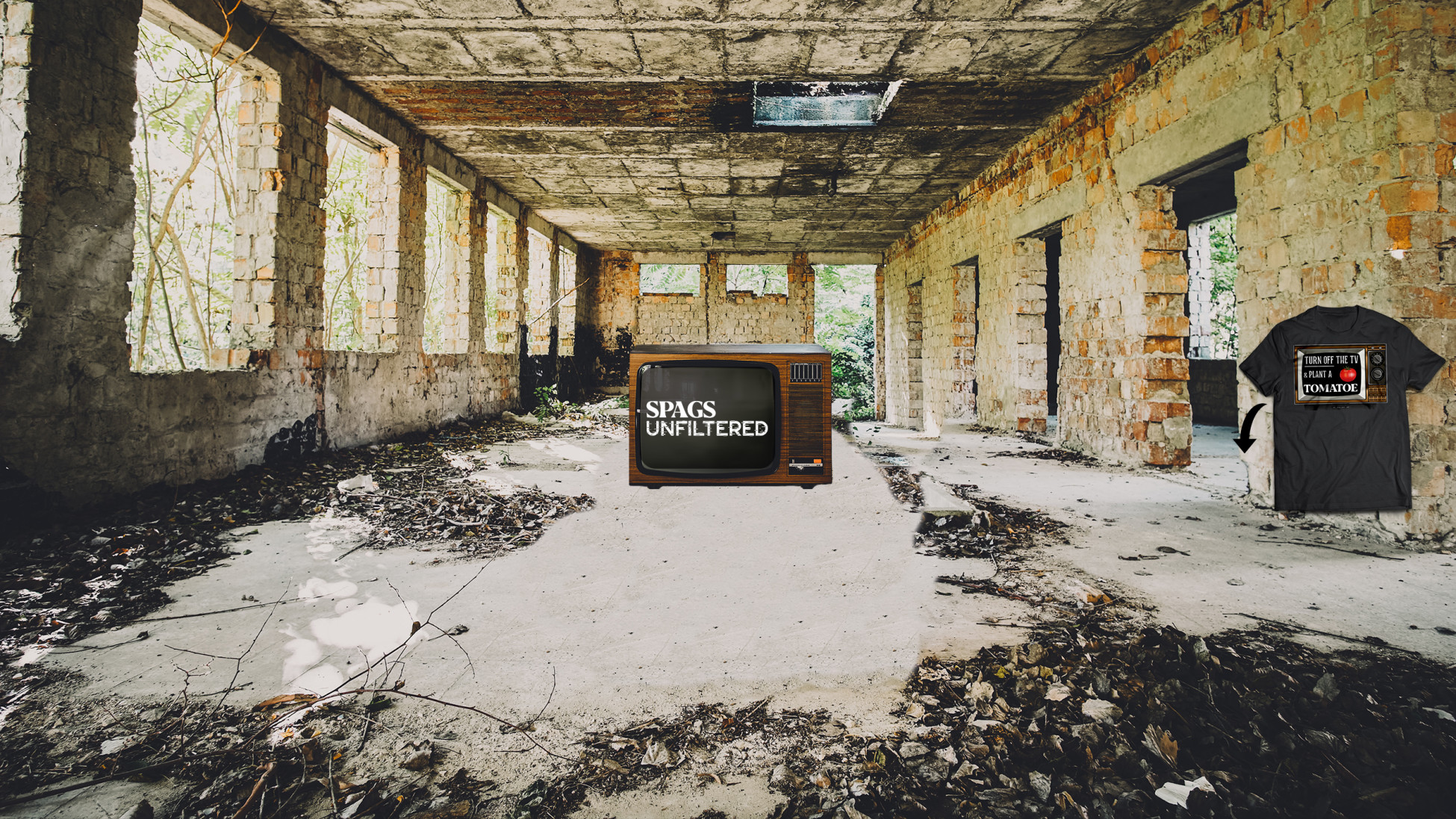
Baby’s First AR
-
Baby’s First AR
Posted by Maytag on October 29, 2022 at 1:05 pmLooking for recommendations for ARs for someone who has never owned or fired one. I’ve grown up with guns but my experience is limited to handguns, shotguns (mainly break action), and bolt action rifles.
Was at a gunshow recently for the first time in some years and the variety of ARs was pretty daunting (wasn’t there with the intent of getting an AR but did want to look around).
A coworker of mine has one that I should get to try out soon but I am not sure yet what kind it is.
So, anyway, any general recommendations for make/model/style/etc. of ARs? Good things to know or keep an eye out for when shopping for AR? Primarily for range fun and hope-you-never-need-it SD, not any kind of competitive shooting.
AlphaDelta replied 2 years ago 10 Members · 39 Replies -
39 Replies
-
I was on a budget so I sourced my parts from Palmetto State Armory and assembled one myself. Then did one for each family member. Never have had any complaints about quality or function.
-
I’m aware of the website but have not purchased anything there before.
-
Had some recommendations to DIY with Aero Precision parts. Any experience with those?
-
-
Three budget friendly, but good quality, options are:
Armalite M15
M&P 15 Sport II
Ruger AR-556
If you’re feeling extra adventurous, ATI (American Tactical Imports) supposedly has a polymer AR for about $450.
-
This reply was modified 2 years, 2 months ago by
 Barred-Rock-or-Brahma.
Barred-Rock-or-Brahma.
-
I too own an Armalite M15A4. It’s my favorite AR I have ever owned.
-
This reply was modified 2 years, 2 months ago by
 SpagsUnfiltered.
SpagsUnfiltered.
-
This reply was modified 2 years, 2 months ago by
-
This reply was modified 2 years, 2 months ago by
-
As far as things to look out for, make sure that it is chambered in 5.56 (it’ll be stamped on the barrel). A 5.56 barrel can handle .223, but you should not fire 5.56 through a .223 barrel. Also, I like to have a functioning forward assist (some budget builds omit this). That’s about it for an entry level plinker. Come on back if you ever want to talk optics and lasers!
-
I was just shooting my .223 (bolt action) today at the range and also got to try my coworker’s AR, so the ammo difference came up in discussion. We shot both through his AR so I could feel the difference.
-
👍👍 Yes. Make sure your receiver is stamped 5.56 NATO
-
Okay, so optics. I’ve heard good things about (and also got to try) the Vortex Viper PST Gen II 1-6×24 LPVO. Seems like a really good contender for its price range.
But I’m not sure I really want to put one of these on my first build. Honestly, I was thinking more about RD+3x (like a Romeo and Juliet combo, or similar) to learn how to use a RD. I’ve shot rifles with scopes almost exclusively over the years so I’m comfortable using them, just thinking about doing something different, at least for starters. I suppose there is always the option of building another AR for specific optics.
So anyway, whatcha’ll got to say about what to use? What are your favorites and advice about the different kinds? I’ve done a little minimal research. Seems like it kinda boils down to:
RD + Irons + optional magnification for RD – relatively cheap and functional, practical in terms of shot range for many real and theoretical situations, conducive to both-eye-open shooting unlike many scopes
Holo – Not too sure how this is differentiated from RD, other than some seem to have a different shape and cost more?
LPVO – starts getting pricier, but more important if you plan on taking a lot of long range shots (such as hunting)
ACOG – sound nice but so expensive that I haven’t researched them that much… probably not something I want to start with
-
LVPOs are apparently the new hotness, but unless the ELCAN counts, I haven’t got around to trying one out yet (2 of 5 stars, would not recommend).
The strength of red dots on rifles is faster and more clear target aquisition and reacquisition for follow up shots and follow on targets compared with irons. If you are comfortable enough with the fundamentals of marksmanship to effectively shoot with irons, then a red dot essentially allows you to break shots as soon as you have a good sight picture (sight alignment can be assumed or else you wouldn’t see your dot). The 2-5 year (50,000 ish hour) battery life is cool too. Apparently, Holosun has some great offerings, but I love my Aimpoint M4S for rifles and the Trijicon RMR for pistols.
ACOG- Great for offense in wide open and well lit spaces, less awesome for MOUT and short range defence in the dark. I have one, and I’m happy that I do, but guys with EOTECHs run circles around me on every flat range. They’re great for getting PID, range estimation, and hitting targets at 200+ meters, but they’re expensive and slow to acquire short range targets (especially if they’re moving).
Holos: Where a red dot overlays your dot on a target (a 2 MOA dot appears to be 6 MOA under 3x magnification), the EOTECH almost makes it look like the target is wearing your reticle (with a 1 MOA dot) on his shirt. This is important because your eyes can only focus on one distance at a time. Holos reticles allow for quick range estimation and hold using the ring. Battery life for the EXPS3 is around 1,000 hours, and they are more astigmatism-friendly than red dots.
-
I need to find somewhere I can try out a holo and compare to what I’ve seen from RDs. I think I understand what you’re describing but seeing is believing. I see EOtech has some holo+3x magnifier combos, too, but crikey that’s s expensive set.
-
Understandable. I didn’t understand the hype either until I used one. They are expensive, r/gunaccessoriesforsale on reddit is where I find the best deals. I’d skip the 3x magnifier at first (there’s a 4x out now too by the way), especially if you are primarily shooting within 100m.
-
Good point, I could just get a holo first and learn how to use it and see how I feel about justifying the cost of adding a magnifier later.
-
-
-
I’d stay away from any models with an arm brace and barrels less than 16 inches to avoid the drama the ATF is about to unleash with those models.
-
What everyone has said is good info, but I don’t trust polymer uppers or lowers. Eventually they will fail. Stick with aluminum. Palmetto state armory is a great resource. So is delta team tactical. As far as variations on the .223 cartridge, Just make sure the barrel is marked 5.56 or .223 wylde. Those chambers will fire anything.
-
At this point, the AR platform “recipe” has been thoroughly worked out and it’s becoming rare to buy a “non-serviceable” AR platform rifle. While some are better than others, the average shooter will do just fine with most any of them. And it’s a wonderful thing!! I believe there is NO SUCH THING as “too many” in civilian hands.
-
My biggest piece of advice is to avoid the “Gucci Gear” AR build. The market is flooded with a bazillion items for your AR. Most of them are gimicky and unnecessary.
In my opinion, you need three things on your AR:
1. a good sling, anyone who had to carry an M16 or M4 in the military with a standard sling knows exactly what I am talking about. Your sling will be relative to the size of AR you build. For example, if you have a full sized or mid sized AR15, especially with a full sized butt stock, a single point sling may not be the best option. The larger the gun, the better a multi point sling can be for when your weapon is not shouldered. Do a ton of reading on the slings you like. Read customer reviews. Nothing sucks more than a horrible sling choice.
2. a top shelf optic (yes, iron sights are 100% outdated and should only ever be used as back up in case your optic fails). I know this will cause an argument, but frankly, modern sights take the guess work out of shooting a weapon designed for 300 meters or closer (yes, the 550 meter point target stuff is a pipe dream that only MILSIM people like to talk about ). Your engagements in the real world will be 200 meters and closer. A good holosight will help with room clearing, follow up shots and night shooting. Iron sights were great in 1903. Not in 2022.
3. a good light. The ability to see what you are shooting at in the dark is vital. Hitting a target at 3 am or in a dark building after the lights go out etc will not only keep your round count lower, but also add an element to your aggressive posture. Good weapon lights will blind the enemy, disorient them etc. However, that said, learn to strobe your light. Select a light with a strobe and remote pressure switch option. Leaving a light on non stop in the dark will absolutely make you a target. Tactical practice with your weapon light and learning how to instinctively close your dominate eye when using your light is very important.
Honorable mentions, and this is only if you have the money and time and desire are a good binary trigger and suppressor. But these items are luxury items and not needed to build a good battle rifle.
All the other stuff, while fun, or maybe cool looking, are not needed by the average shooter for defense or offensive reasons. So many people buy all this shit and end up with a 15 pound AR15 that they can barely shoot.
Spend that extra cash on as many 30 round magazines (frankly, drum mags are dumb) as you can get and as much ammo as you can get. Magazines are the unsung need of any AR rifle. If you ever find yourself engaging real world targets, you will almost never police up your magazines. You will shoot, drop them, reload and keep moving. So having several hundred magazines in reserve is a must for anyone who is prepparedness minded.
Avoid niche AR15’s. While piston driven AR’s are cool, and could be better in some situations, the fact is that the one thing that makes the AR the people’s rifle, is common parts, common mags, common ammo. I don’t own any AR’s in off calibers for that reason. Only 5.56 stamped AR’s for me. I don’t have 7.62, 9mm or .22 cal conversions. I want my rifle to work with your rifle. I want to use virtually any BCG or buffer spring or firing pin retaining pins etc. I want common stuff. This is the mantra any new AR owner show follow. Sure, in a year or two when you have your battle rifle built, stocked and ready to roll; by all means go buy the other stuff if you want. But focus on what you need for your immediate preparedness needs. Simple is better.
-
I second this. It is difficult to know what accessories you want in the beginning so you buy them all. Then you end up with a 14 pound AR. Then you start stripping it back . It always comes back to the basics. Fortunately or should I say hopefully 99.9 percent of us will never have to use them outside of the range. But ALWAYS be ready.
-
Magpul MS1 and MS4 slings were both recommended to me. The 1 is a two-point and the 4 can be either a one- or a two-point. Anyone have experience with these?
-
Single point slings are only good for small AR builds. I hat ether for mid sized and full sized AR’s. I stopped using a single point sling while in Iraq.
-
-
-
Jonathan, In reply to your question about aero precision ARs. There is one next to me that won’t cycle as I write this. I’ve had to fix several new aero precision carbines. I get it. Things happen, but I’ve not been impressed with their customer service a few times as well. That’s the one that aggravates me.
I’ve handled a bunch of ARs over the years and they do have issues. Typically cycling issues due to too much or too little gas to function the action. This is typically caused by gas block misalignment, gas ring leakage on the bolt (or badly machined carriers like the one on my bench), loose gas keys and undersized gas ports in the barrel. As the gas system gets longer the port has to be larger because the pressure drops off as the port moves farther from the breech. These are all problems that I regularly encounter with NEW ARs. Once the initial problems are fixed, they will usually run well for thousands of rounds.
I won’t go into issues I see because of lack of maintenance or other abuse.
-
Good info, thanks. Any other parts recommendations for a DIY assembly? Or do you prefer a whole pre-made to then customize?
-
-
The last build I did for myself was a basic 16″ palmetto state armory. Don’t get too wrapped up in brand names. There is a potential for problems with any of them, but it’s typically easy enough to fix. When you do get one, put a little oil on all the reciprocating surfaces and fire a hundred rounds through it. Slowly. If it works ok it should serve you well for a long time.
-
I couldn’t agree more with this statement. AR’s are AR’s and Palmeto runs just as well as the big name AR’s. So many people over spend on a base AR and then spend just as much replacing everything on the AR with after market parts. At that point you should have just built an AR vs bought one.
-
-
keep spare spring and drift pin kits for them
-
This reply was modified 2 years, 2 months ago by
 Squeeze.
Squeeze.
-
Any more details on this? Are there good packs to get that you can recommend? I watched some assembly vids and the spare springs thing came up as a general recommendation but I am not sure on the specifics.
-
the springs are mainly for the stock trigger, and spare drift pins are a good idea. I have disassembled them for cleaning and lost a pin before. they are small, and if the get away, they have a habit of disapearing. Aftermarket triggers are mostly self contained units. Most of the upgrade parts are not really neccesary. But most do enhance performance. But if you are not a competitive shooter, or the type to demand the best of everything, Stock works fine
-
-
This reply was modified 2 years, 2 months ago by
-
I just think the AR should be the “State Weapon of Arkansas”, and celebrated as such with parades, and speeches, and flags, and…. (after all, our abbreviation is: “AR”)
-
Jonathan – Keep small parts on hand. You are more likely to lose a part than have one break. Takedown detents and their springs, Buffer detents and springs, etc. A lower parts kit is a good starting point. The other part is a bolt carrier group. If you can’t keep the carbine from getting carboned up you can throw a fresh unit in and get it running again.
The other thing to think about is tools. There are some good sets out there for ars. Some of the components will get mangled without the right tools. D
-
The amount of various gun tools seems overwhelming, haha.
What I’ve seen so far it seems like recommended for ARs is a brass punch set and special wrench for taking the stock/tube apart (other than maybe a few other standard things like needle-nose pliers and a flat-head screwdriver). Any other essentials you’d recommend?
-
I use regular steel punches on ars. Brass comes in handy for handgun or other sights that have to be drifted.
It depends on how far you want to disassemble/ assemble your carbine. If you have a vise it is easier to do several tasks.
A mag well vise block is good to hold a lower stationary for service.
A reactor rod is the best way to hold an upper.
An armorer’s wrench will do several tasks, but will not typicaly hold up to a lot of use. There are more secialized tools for barrel nuts/buffer castle nuts etc. that will last longer.
1/4″ clevis pin for the front takedown detent.
Most of the other tools are common ones you probably have already.
-
I don’t have a vice or a bench/table to put one on, but I can keep my eye out for a deal.
-
It won’t have to be a super heavy duty bench/table if that’s all you will use it for. For a vise watch craigslist and check out antique/junk shops.
-
-
-
Speaking of entry level ARs, Here is a nice entry level LPVO. I have mounted and zeroed these and I really like them. On sale at Midway. https://www.midwayusa.com/product/1017914338?pid=297203 D
-
Just an update on this, I successfully assembled a 16″ PSA kit a couple weeks ago. That was fun, like putting a LEGO set together! The upper came pre-assembled so I was able to put the lower together with a minimal amount of tools and effort. Function checked it at the range and all went well. Pretty happy with it so far for the price; went together well and shot well (at least functionally).
-
Really good to hear Jonathan! As you fire it more, Watch for rub/polish marks on the bolt carrier and that will tell you where to put some oil. D
-
Log in to reply.
